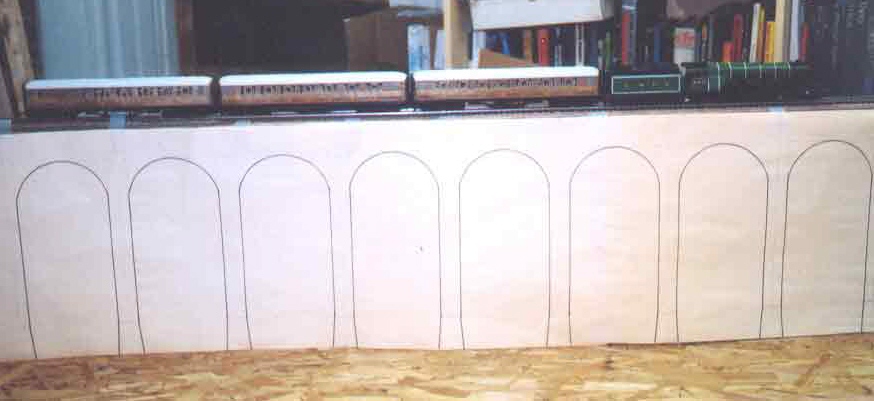--more--

Using a drafting compass and a straight edge, the designer drew the outline of each arch in pencil. The pencil outlines were then inked over with a heavy black marker, and the resulting cartoon was suspended from the upper-level roadbed of the south face with Scotch Magic Tape (c). In the cartoon, each arch is five inches wide, and each column is one inch wide, corresponding respectively to arches with a 30-foot span separated by 6-foot-thick columns.
This view shows the entire "Flying Scotsman" train posing stationary on the roadbed at the top of the cartoon. If you look closely at the columns, you can see that they taper and widen slightly at the bottom. This increased width represents the column footings, as depicted by A. F. Tait in his lithograph of the Stockport Viaduct (see Plate 131).
Go to top of page